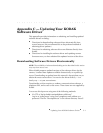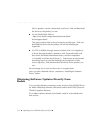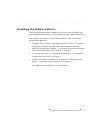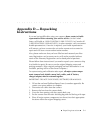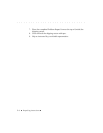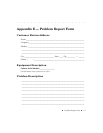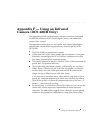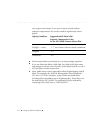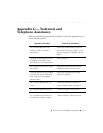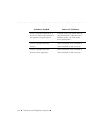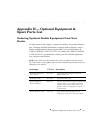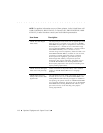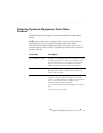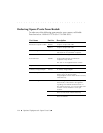
. . . . . . . . . . . . . . . . . . . . . . . . . . . . .
Using an Infrared Camera F-1
Appendix F — Using an Infrared
Camera (DCS 420IR Only)
This appendix provides information for customers who have purchased
the KODAK Professional DCS 420IR Digital Camera, the infrared (IR)
version of the camera.
This appendix assumes that you are familiar with infrared photography,
and provides only the following introductory material specific to the
DCS 420IR.
The DCS 420IR is a monochrome camera.
Unlike other DCS 420 Camera models that incorporate a cover glass
that blocks infrared light, the DCS 420IR has a standard cover glass
that allows infrared light to reach the imager.
The spectral response of the DCS 420IR is 420 to 1,000 nanometers at
greater than 5% quantum efficiency.
The best focusing (the sharpest results), is obtained if you use Micro
Nikkor lenses. Other lenses will work, but may produce results that
are less sharp, since the visible spectrum and the IR content of the
image, focus at a different point with other lenses.
If you must use a lens other than a Micro Nikkor, stop down to f/8 or
greater (for maximum depth of field which may minimize the effects
of the IR focus shift), or use the IR compensation dot on the lens — if
present — after manually focusing.
Set the ISO only to values from 200 to 800. However, you can use the
Nikon N90s camera exposure compensation to extend exposure
selections. The table below suggests initial values for several lighting
conditions using exposure compensation; using these values allow



